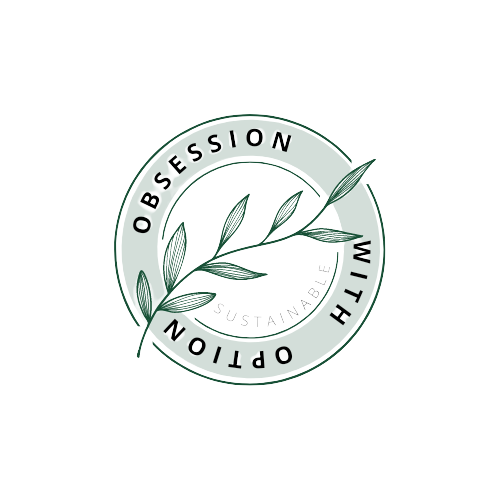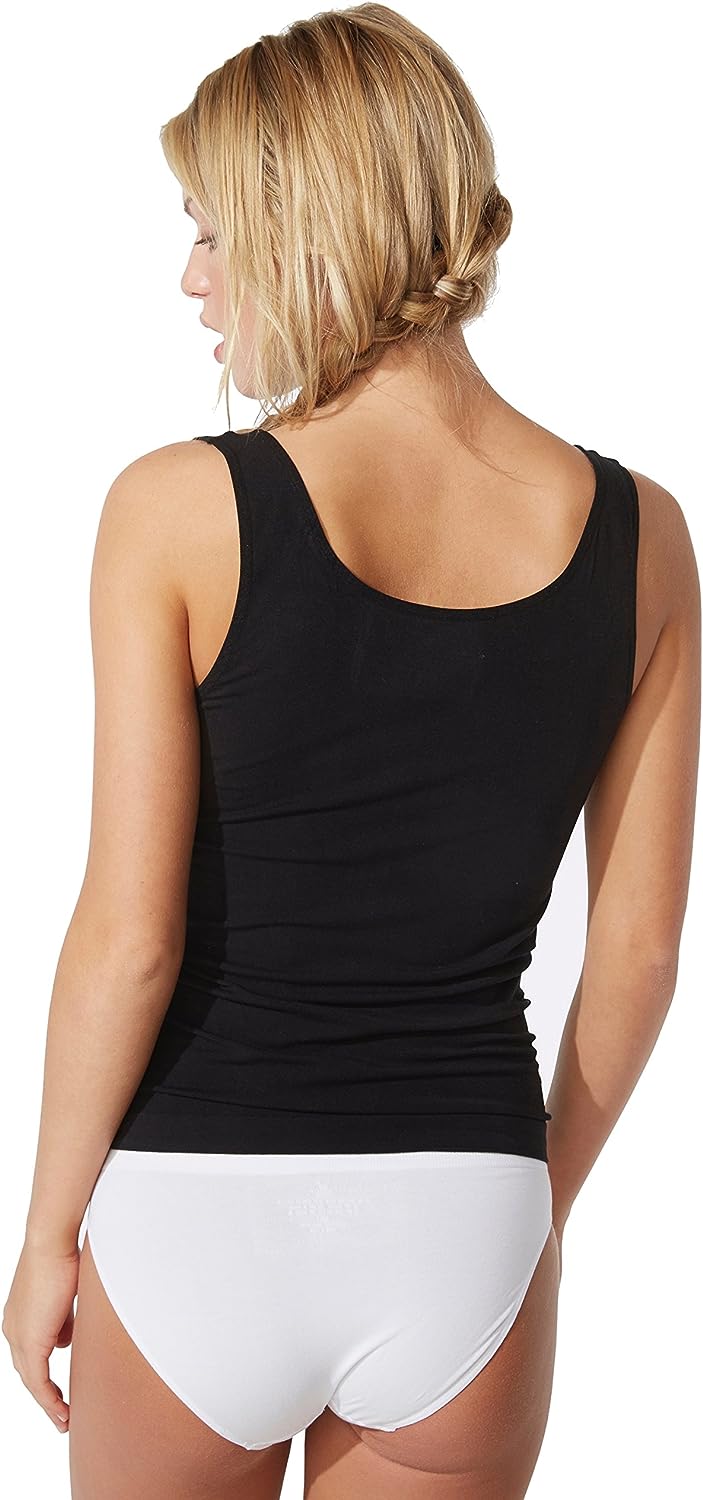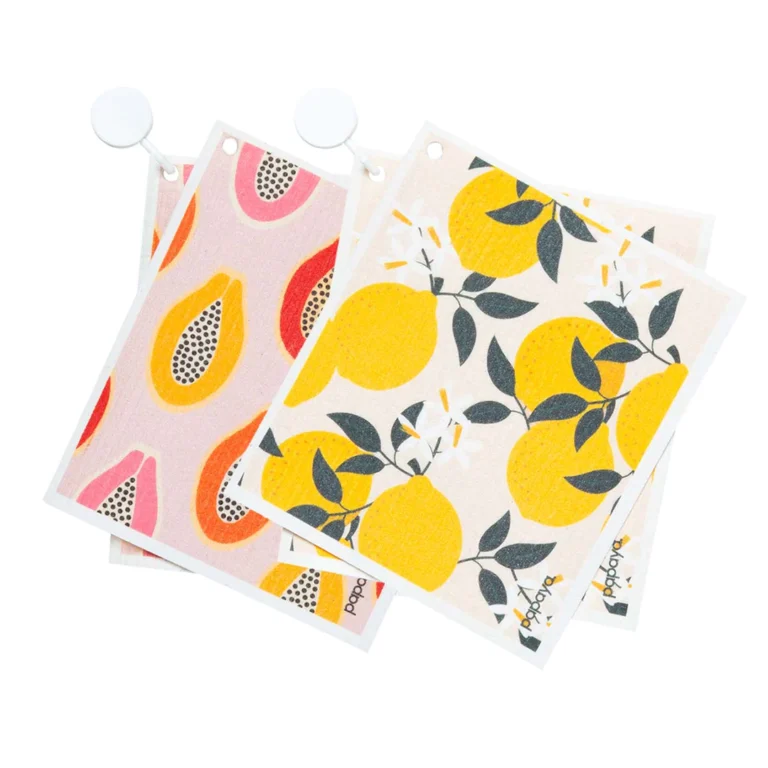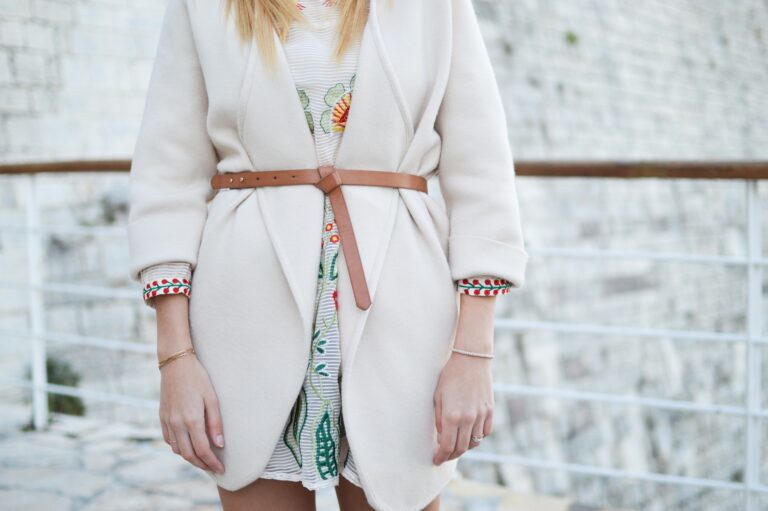In this article, you will learn about the concept of Slow Fashion and why it is crucial for sustainable style. Slow Fashion refers to a movement that promotes a more mindful and ethical approach to clothing consumption. We will explore the reasons why Slow Fashion is significant in reducing the negative impact of the fashion industry on the environment and workers. By understanding the principles of Slow Fashion, you will be empowered to make more conscious choices and contribute to a more sustainable and responsible fashion industry.
Definition of Slow Fashion
Slow Fashion: A Paradigm Shift in the Fashion Industry
In today’s fast-paced world, the fashion industry is often associated with rapid production, disposable trends, and the exploitation of labor and resources. However, a paradigm shift is underway, championed by a growing movement known as Slow Fashion. Slow Fashion is a conscious and sustainable approach to fashion that places emphasis on ethical production, environmental responsibility, and promoting quality and longevity in garments.
The Core Principles of Slow Fashion
At its core, Slow Fashion encourages a departure from the fast-paced and wasteful practices prevalent in the fashion industry. It advocates for four key principles:
-
Reducing Environmental Impact: Slow Fashion aims to minimize the environmental footprint of the fashion industry by promoting sustainable materials, reducing waste, and conserving resources.
-
Ethical Production and Fair Trade: Slow Fashion prioritizes the importance of fair and ethical working conditions for garment workers, advocating for transparency and accountability within supply chains.
-
Promoting Quality and Longevity: Slow Fashion celebrates the craftsmanship and quality of garments, encouraging consumers to invest in well-made and timeless pieces that can be treasured for years to come.
-
Sustainable Consumption: Slow Fashion challenges the culture of overconsumption by promoting mindful and intentional shopping habits, advocating for the value of owning fewer items of higher quality.
The Role of Slow Fashion in Achieving Sustainability
Slow Fashion plays a crucial role in achieving sustainability in the fashion industry. By advocating for responsible production and consumption practices, it aims to address the social and environmental impacts of the fast fashion model.
Environmental Impact: The fashion industry is notorious for its significant environmental footprint, contributing to pollution, resource depletion, and waste. Slow Fashion seeks to address these issues by promoting sustainable materials, such as organic cotton and recycled fabrics, and encouraging recycling and upcycling of garments.
Ethical Production: Sweatshops and exploitative labor practices have long plagued the fashion industry. Slow Fashion prioritizes fair trade and ethical production, ensuring that garment workers are paid fair wages, work in safe conditions, and are treated with dignity and respect.
Community Empowerment: Fast fashion has had a detrimental effect on local economies, often driving small-scale artisans out of business. Slow Fashion supports local and small-scale production, empowering communities and preserving traditional craftsmanship.
By adopting these principles, Slow Fashion is paving the way towards a more sustainable and ethical fashion industry. It offers a viable alternative to the harmful practices that have come to define the fast fashion model.
Importance of Slow Fashion
Reducing Environmental Impact: How Slow Fashion Helps
One of the most significant impacts of the fashion industry on the environment is the excessive use of natural resources and the generation of waste. The production of conventional textiles, such as cotton, involves the use of pesticides and chemical fertilizers, which pollute water sources and harm ecosystems. In contrast, Slow Fashion promotes the use of sustainable materials, such as organic cotton, hemp, and recycled fabrics, which have a lower environmental impact.
Furthermore, Slow Fashion encourages recycling and upcycling of garments. By extending the life cycle of clothes, reducing waste sent to landfills, and minimizing the need for new production, Slow Fashion helps to conserve resources and reduce pollution.
Ethical Production and Fair Trade: The Ethos of Slow Fashion
The fashion industry has long been marred by reports of exploitative labor practices, with workers enduring long hours, low wages, and unsafe working conditions. Slow Fashion seeks to address these issues by championing fair trade and ethical production.
By supporting Slow Fashion brands that prioritize transparency and accountability, consumers can ensure that their clothing was produced under fair working conditions. This includes fair wages, safe and clean environments, and the absence of child labor.
Promoting Quality and Longevity: The Value of Slow Fashion
In the era of fast fashion, clothes are often considered disposable, leading to an overconsumption mentality. Fast fashion garments are typically made with low-quality materials and constructed poorly, causing them to wear out quickly.
Slow Fashion challenges this mindset by promoting quality and longevity in garments. Slow Fashion brands prioritize craftsmanship, using durable materials and ethical production methods. By investing in well-made and timeless pieces, consumers can reduce their overall consumption and environmental impact while enjoying garments that are built to last.

The Slow Fashion Movement
Origins and Evolution of the Slow Fashion Movement
The Slow Fashion movement originated as a response to the negative impacts of the fast fashion industry. It emerged as a conscious alternative that encourages a shift towards sustainable and ethical fashion practices.
While the exact origins of the Slow Fashion movement are difficult to pinpoint, it gained significant momentum in the early 2000s, propelled by prominent fashion designers, activists, and consumers who were disillusioned with the harmful practices of the fashion industry.
Over the years, the Slow Fashion movement has evolved and gained widespread recognition. It has garnered support from consumers, activists, and industry professionals who are increasingly concerned about the social and environmental consequences of fast fashion.
Key Players and Influencers in Slow Fashion
Several key players and influencers have played pivotal roles in shaping the Slow Fashion movement and promoting its principles.
Fashion Revolution: Fashion Revolution is a global movement that aims to bring transparency, accountability, and sustainability to the fashion industry. Through campaigns like “Who Made My Clothes?” and “Fashion Revolution Week,” Fashion Revolution raises awareness among consumers and holds brands accountable for their environmental and ethical practices.
Stella McCartney: British fashion designer Stella McCartney is a vocal advocate for sustainable fashion and animal rights. She has been at the forefront of the Slow Fashion movement, using innovative and sustainable materials in her collections and promoting a circular economy within her brand.
Livia Firth: Livia Firth, the founder of Eco-Age and co-founder of the Green Carpet Challenge, is known for promoting sustainable and ethical fashion. Through initiatives like the Green Carpet Fashion Awards, she highlights the importance of sustainability in the fashion industry and encourages designers to adopt more responsible practices.
The Impact of Slow Fashion on the Fashion Industry
The Slow Fashion movement has had a significant impact on the fashion industry, forcing brands to address their environmental and ethical practices. With consumers increasingly demanding sustainable and ethical alternatives, brands are faced with the need to adapt or risk losing market share.
Many fast fashion brands have made changes in response to consumer demand for sustainability and ethical practices. They have introduced recycling programs, launched sustainable collections, and committed to reducing their carbon footprint.
Furthermore, the Slow Fashion movement has paved the way for the rise of numerous slow fashion brands. These brands prioritize quality, sustainability, and ethical production, offering consumers a more conscious and responsible alternative to fast fashion.
While the Slow Fashion movement still faces challenges in its journey towards transforming the fashion industry, its influence is undeniable. By raising awareness and demanding change, the movement continues to inspire individuals and brands to embrace sustainable and ethical practices.
Slow Fashion Principles and Practices
Sustainable Materials and Fabrics in Slow Fashion
Slow Fashion emphasizes the importance of using sustainable materials and fabrics as an alternative to the conventional textiles that dominate the fashion industry.
Organic cotton is one of the most commonly used sustainable materials in Slow Fashion. Grown without the use of synthetic pesticides or fertilizers, organic cotton helps to reduce water pollution, protect ecosystems, and safeguard the health and well-being of farmers and workers involved in its production.
Hemp is another sustainable material that is gaining popularity in Slow Fashion. Hemp requires fewer resources, such as water and pesticides, to grow compared to conventional cotton. Additionally, it has excellent durability and breathability properties, making it an ideal fabric choice for sustainable clothing.
Recycled fabrics are also widely used in Slow Fashion. By repurposing materials such as plastic bottles or textile waste, these fabrics significantly reduce the demand for new resources, conserve energy, and divert waste from landfills.
Artisanal and Handmade Approaches in Slow Fashion
Artisanal and handmade approaches are synonymous with Slow Fashion. They prioritize craftsmanship, traditional techniques, and attention to detail, fostering a deeper connection between the consumer and the garment.
Artisanal techniques, such as hand weaving or hand dyeing, not only create unique and one-of-a-kind garments but also promote the preservation of traditional craftsmanship and cultural heritage.
By supporting artisanal and handmade practices, consumers contribute to the longevity of these traditional techniques and enable artisans to earn a fair and sustainable income.
Local and Small-Scale Production in Slow Fashion
Slow Fashion advocates for local and small-scale production as an alternative to the globalized mass production model that dominates the fashion industry.
Local production reduces transportation emissions and supports local economies, enabling consumers to have a closer relationship with the garments they purchase. It also fosters a sense of community and accountability between consumers and producers.
Small-scale production allows for greater control and transparency in the production process, ensuring fair and ethical working conditions for garment workers. It also facilitates more personalized and tailored approaches to fashion, encouraging individual expression and unique style.
By prioritizing local and small-scale production, Slow Fashion encourages a shift towards a more sustainable, responsible, and community-driven fashion industry.

Sustainable Consumption in Slow Fashion
Capsule Wardrobes and Minimalism: Embracing Simplicity
Capsule wardrobes and minimalism are key concepts in Slow Fashion that promote mindful and intentional shopping habits.
A capsule wardrobe consists of a limited number of well-chosen and versatile pieces that can be mixed and matched to create a variety of outfits. By curating a capsule wardrobe, consumers prioritize quality over quantity, ensuring that each garment is functional and aligns with their personal style.
Minimalism extends beyond the wardrobe and encompasses a lifestyle approach that emphasizes simplicity and decluttering. By adopting a minimalist mindset, consumers focus on the essentials, eliminating unnecessary consumption and reducing waste.
Capsule wardrobes and minimalism not only promote sustainability and reduce environmental impact but also simplify daily dressing choices and encourage a more mindful and intentional approach to fashion.
Upcycling and Repurposing: Breathing New Life into Old Garments
Upcycling and repurposing are creative and sustainable approaches encouraged by Slow Fashion. Instead of discarding old garments, these practices involve transforming and reinventing them into new pieces.
Upcycling involves taking an existing garment and creating something new from it, such as turning an old pair of jeans into a denim skirt or repurposing a vintage dress into a stylish top. This process not only extends the lifespan of garments but also reduces the demand for new production.
Repurposing, on the other hand, involves using garments or textiles for purposes other than their original intent. For example, an old t-shirt can be repurposed into a cleaning rag or a cushion cover.
By embracing upcycling and repurposing, consumers can unleash their creativity, reduce waste, and contribute to a more circular and sustainable fashion industry.
Renting and Sharing: Exploring Collaborative Consumption in Slow Fashion
Renting and sharing platforms have gained popularity in recent years as a response to the overconsumption and waste associated with the fashion industry.
Slow Fashion encourages consumers to explore rental and sharing options for special occasions or temporary needs. By renting garments, consumers can enjoy a diverse range of styles without the need for excessive purchases. Sharing platforms, such as clothing swaps or rental services, enable individuals to circulate and exchange clothing, promoting a more sustainable and collaborative approach to fashion.
Renting and sharing foster a sense of community and encourage sustainable consumption practices, reducing the environmental impact of fashion while still providing the opportunity for self-expression and style.
Social and Environmental Impacts of Fast Fashion
Environmental Pollution and Resource Depletion
Fast fashion contributes significantly to environmental pollution and resource depletion throughout its lifecycle.
The production of conventional textiles requires vast amounts of water, energy, and chemicals. For example, it takes around 2,700 liters of water to produce a single cotton t-shirt. The release of toxic wastewater from textile dyeing and finishing processes contaminates water sources, negatively impacting ecosystems and communities.
Furthermore, the rapid turnover of fashion trends in fast fashion leads to excessive consumption and disposal of clothing. The majority of discarded garments end up in landfills, where they contribute to greenhouse gas emissions as they decompose.
Sweatshops and Exploitative Labor Practices
Fast fashion relies heavily on low-cost labor, often outsourcing production to countries with lax labor laws and weak worker protections. This has led to the exploitation of garment workers in sweatshops, with long working hours, low wages, and unsafe working conditions.
Workers in sweatshops are often subjected to verbal and physical abuse, denied basic human rights, and forced to work in hazardous environments. Women and children are particularly vulnerable to these exploitative labor practices.
The relentless pursuit of cheap labor and quick production turnaround in fast fashion perpetuates a cycle of poverty and human rights abuses for garment workers, with little consideration for their well-being.
Negative Effects on Local Economies
The rise of fast fashion has had a detrimental effect on local economies, especially in developing countries where garment production is outsourced.
The intense competition and pressure for low prices imposed by fast fashion brands often lead to cost-cutting measures that negatively impact local businesses and artisans. Small-scale producers are unable to compete with large-scale factories, resulting in job losses and the erosion of traditional craftsmanship.
Furthermore, the exploitation of labor in sweatshops leads to downward pressure on wages, exacerbating poverty and economic inequality within these communities.
The nature of fast fashion’s global supply chains also contributes to a lack of local accountability, with brands often disconnected from the social and economic impact of their production practices.

Transitioning to Slow Fashion
Key Strategies for Adopting Slow Fashion Practices
Transitioning to Slow Fashion requires a shift in mindset and adopting new strategies for consumption and production.
-
Educate Yourself: Start by educating yourself about the social and environmental impacts of the fashion industry. Understand the practices and principles of Slow Fashion, and how you can align your values with your purchasing decisions.
-
Prioritize Quality over Quantity: Instead of buying numerous cheaply made garments, invest in fewer high-quality pieces. Look for well-made garments that will stand the test of time, both in terms of durability and style.
-
Support Slow Fashion Brands: Seek out and support brands that align with the principles of Slow Fashion. Look for certifications and labels that indicate sustainable and ethical practices, such as Fair Trade or GOTS (Global Organic Textile Standard).
-
Extend the Lifespan of Your Clothing: Take care of your garments to maximize their lifespan. Follow care instructions, mend and repair when necessary, and consider upcycling or repurposing old items.
Building a Sustainable and Ethical Wardrobe
Building a sustainable and ethical wardrobe is a journey that takes time and mindfulness. Here are some key steps to consider:
-
Assess Your Wardrobe: Take stock of your current wardrobe and evaluate which pieces align with your values and principles. Consider donating or selling items that no longer serve a purpose.
-
Curate a Capsule Wardrobe: Create a capsule wardrobe by selecting versatile, timeless, and high-quality pieces that can be mixed and matched. Focus on building a wardrobe that reflects your personal style and stands the test of time.
-
Research Slow Fashion Brands: Explore Slow Fashion brands that prioritize sustainability and ethical practices. Look for brands that use sustainable materials, promote fair working conditions, and demonstrate transparency throughout their supply chains.
-
Consider Secondhand and Vintage: Embrace the concept of secondhand and vintage shopping as a way to reduce waste and give new life to pre-loved garments. Thrift stores, online marketplaces, and vintage boutiques are great sources for unique and sustainable finds.
Overcoming Challenges and Obstacles in Slow Fashion Transition
Transitioning to Slow Fashion may come with its fair share of challenges and obstacles. Here are some strategies for overcoming common hurdles:
-
Affordability: Slow Fashion can sometimes be associated with higher price points due to the use of sustainable materials and ethical production. However, investing in quality pieces may actually save money in the long run, as they tend to last longer and require fewer replacements.
-
Accessibility: Slow Fashion brands and sustainable options may not always be readily available in every location. However, online platforms and marketplaces have made it easier to access and discover sustainable and ethical fashion brands worldwide.
-
Changing Mindset: Transitioning to Slow Fashion may require a shift in mindset away from the culture of fast and disposable fashion. Educate yourself about the true cost of fast fashion and the benefits of Slow Fashion, and take small steps towards embracing a more conscious and sustainable approach.
Remember that transitioning to Slow Fashion is a personal journey, and it’s important to embrace progress over perfection. Every step towards adopting more sustainable and ethical practices in your fashion choices contributes to a more sustainable future.
Slow Fashion Initiatives and Brands
Fashion Revolution: Creating Awareness and Accountability
Fashion Revolution is a global movement that aims to create awareness, accountability, and transparency in the fashion industry. Through initiatives like the “Who Made My Clothes?” campaign and “Fashion Revolution Week,” Fashion Revolution encourages consumers to question brands about their supply chains and advocate for a more ethical and sustainable fashion industry.
The movement calls for greater transparency throughout the supply chain, urging brands to disclose where their garments are made, by whom, and under what working conditions. By shining a light on the social and environmental impact of fashion, Fashion Revolution empowers consumers to make informed choices and encourages brands to prioritize sustainability and ethics.
Certifications and Standards: Identifying Sustainable Fashion
Certifications and standards play a crucial role in identifying and promoting sustainable fashion. They provide consumers with a clear framework for assessing the sustainability and ethics of a brand or garment.
Examples of widely recognized certifications include Fair Trade, Global Organic Textile Standard (GOTS), and Oeko-Tex Standard 100. These certifications ensure that garments are produced under fair working conditions, with sustainable materials, and without the use of harmful chemicals.
By looking for these certifications, consumers can make more informed choices and support brands that prioritize sustainability and ethics.
Examples of Slow Fashion Brands Leading the Way
Numerous Slow Fashion brands have emerged in recent years, championing sustainability, ethical practices, and timeless design. Here are a few examples:
-
Patagonia: Known for its commitment to environmental and social responsibility, Patagonia produces high-quality outdoor clothing using recycled materials and fair labor practices. The brand also promotes repair and recycling, encouraging customers to extend the life of their garments.
-
Eileen Fisher: Eileen Fisher is a pioneer in sustainable fashion, prioritizing organic and recycled materials, and fair working conditions. The brand also advocates for a circular economy by offering recycling programs for old garments and secondhand sales.
-
Reformation: Reformation is a sustainable fashion brand that focuses on reducing environmental impact through conscious design and responsible manufacturing. The brand utilizes eco-friendly materials, such as TENCEL™ and deadstock fabrics, and provides transparency about the production process.
These brands are just a few examples of the growing number of Slow Fashion brands that are leading the way towards a more sustainable and ethical fashion industry. By supporting these brands, consumers can contribute to positive change in the fashion industry.

Educating for a Sustainable Future
The Role of Education in Promoting Slow Fashion
Education plays a pivotal role in promoting Slow Fashion and creating a more sustainable future for the fashion industry. By raising awareness and providing knowledge about the social and environmental impact of fashion, education empowers individuals to make informed choices and demand change.
Educational initiatives can encompass a wide range of approaches, from integrating sustainability into fashion design and business programs to organizing workshops and events that engage consumers in sustainable fashion practices. By providing the tools and knowledge necessary for a more conscious approach to fashion, education paves the way for a more sustainable future.
Integrating Sustainability into Fashion Design and Business Programs
Fashion design and business programs have a significant role to play in transforming the fashion industry. By integrating sustainability into the curriculum, these programs equip future designers and professionals with the knowledge and skills necessary to create sustainable and ethical fashion.
Courses can cover topics such as sustainable materials and production techniques, ethical sourcing, circular design principles, and social responsibility. By ensuring that sustainability is an integral part of fashion education, institutions can shape the next generation of fashion professionals who will prioritize sustainable practices in their careers.
Raising Awareness and Consciousness among Consumers
Raising awareness among consumers is essential in fostering a shift towards Slow Fashion and sustainable consumption habits.
Campaigns, events, and social media platforms play a significant role in spreading awareness about the social and environmental impacts of the fashion industry. Through engaging content, educational resources, and calls to action, consumers can be empowered to make more conscious fashion choices and hold brands accountable for their practices.
By raising awareness and consciousness among consumers, education contributes to a collective movement towards a fashion industry that prioritizes sustainability and ethical practices.
Conclusion
Embracing Slow Fashion for a More Sustainable Future
Slow Fashion represents a paradigm shift in the fashion industry, challenging the harmful practices associated with fast fashion. By promoting sustainability and ethics, Slow Fashion offers a viable alternative, encouraging consumers and brands to prioritize quality, longevity, and responsible production.
Transitioning to Slow Fashion requires a shift in mindset and a commitment to learning, but every small step towards conscious consumption contributes to a more sustainable future. By curating a capsule wardrobe, embracing sustainable materials, supporting ethical brands, and embracing a mindset of simplicity and durability, you can make a positive impact on the fashion industry and work towards a more sustainable future.
The Power of Individual Choices and Collective Action
As a consumer, your choices hold the power to shape the future of the fashion industry. By opting for Slow Fashion, you can support brands that prioritize sustainability and ethics, reduce your environmental impact, and contribute to a more equitable and responsible fashion industry.
However, the transformation of the fashion industry requires collective action. By raising awareness, educating others, and demanding change from brands and policymakers, we can work towards a fashion industry that values people and the planet.
Together, we can create a future where fashion is synonymous with sustainability, ethics, and timeless style. Embrace Slow Fashion and be the change you want to see in the fashion industry.














